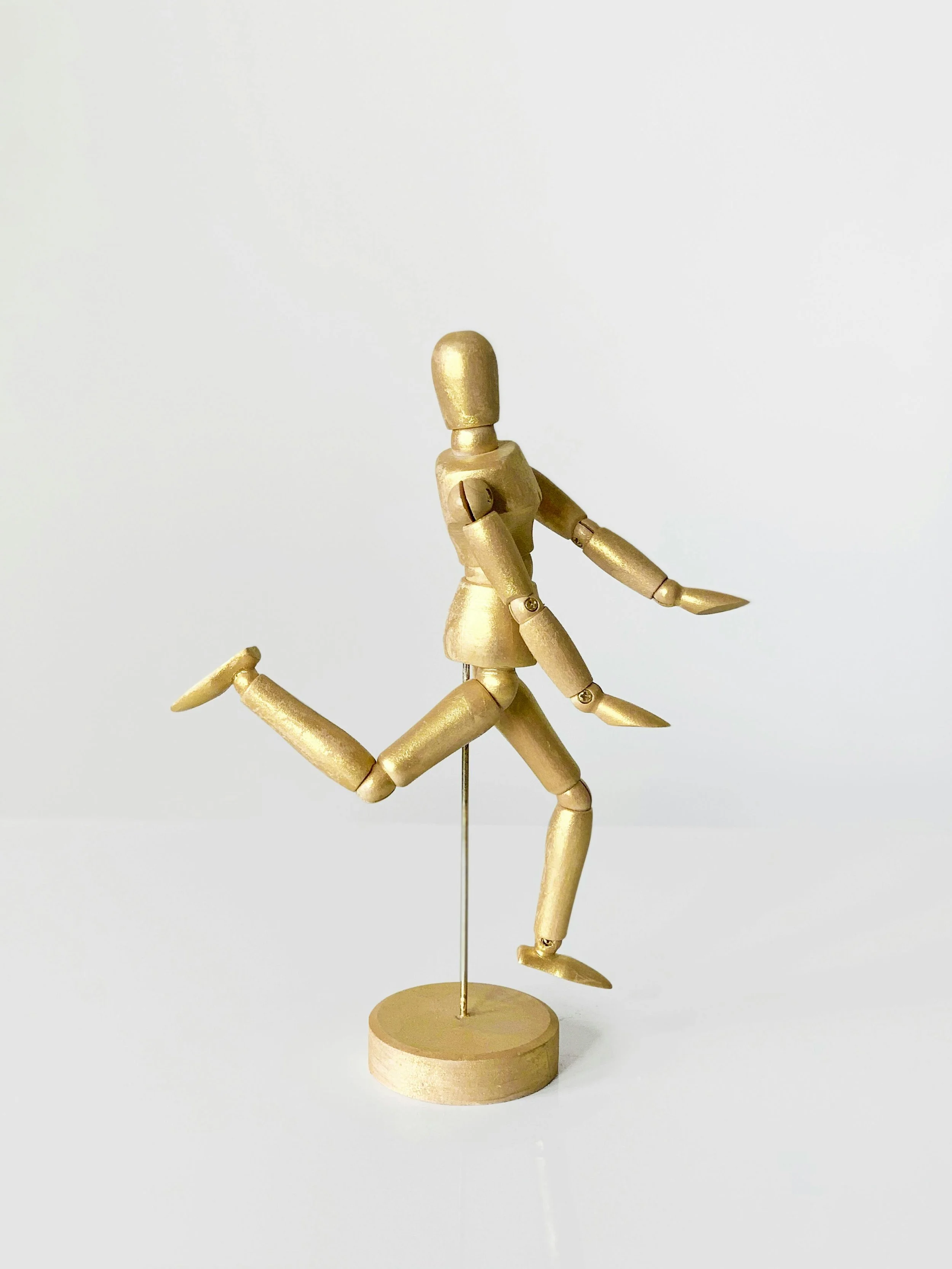
Meeting Your Main Character
Discover more about your self.
Telling and re-telling our story is an important part of therapy. I have created this series of exercises to help you identify key elements of your personal narrative and to practice reflecting upon and authoring your life story. These exercises do not take the place of therapy, but are intended as a form of creative self-discovery and expression. As you learn more about yourself through this process, you may want to bring the insights you gain here to your work with your therapist.
In this exercise, we will get to know our main character: you! We will create a character sheet to learn more about your identities, needs, skills, values and more. We will also write a character backstory.
If you have ever played Dungeons and Dragons or another tabletop role-playing game this exercise might feel a little familiar. Don’t worry if you have no experience with these kinds of games, everything you need to know will be explained here. We will write up a character sheet to get a better sense of who you are, what matters to you, where your strengths lie, where you want to grow, where you’ve come from and where you’re going. We are not inventing a fictional character or describing who you hope to be, instead we are trying to measure how you see yourself today.
Please grab a notebook and write down the following information. (Alternatively, you can print out a PDF character sheet here.)
Name: Pretty self-explanatory, what do you call yourself?
Pronouns: Also pretty self-explanatory, how do you want people to refer to you?
Adventuring Class: In most role-playing games characters have a class or job that defines the role they play within their adventuring party or within society as a whole. Commonly encountered classes include:
Barbarians - channel their emotions into a rage to fight monsters
Bards - inspire other party members through music and performance
Clerics - heal party members and cast spells to fight off evil
Druids - commune with nature and transform into various animals
Fighters - master various fighting styles and weapon types to dominate combat
Monks - train in martial arts to hone physical and spiritual strength
Paladins - defend the good and holy with strength, charisma and leadership
Rangers - hunt and track prey to survive the rough wilderness
Rogues - sneak and steal to solve problems and gain the upper hand
Sorcerers - chosen by fate to wield a powerful and unpredictable magic
Warlocks - contract with supernatural beings to untap magic powers
Wizards - study a variety of magics to build, destroy or transform reality
These basic classes are just the tip of the iceberg. Creators have added many, many classes across various games and stories. Acrobats, advisors, amazons, artisans, berserkers, clairvoyants, dancers, merchants, muses, ninjas, princesses, sages, scholars, spies and valkyries are just a small sample of the options available to us.
If high fantasy is not your thing, we can also look at the roles everyday people fulfill in their regular lives. These might include roles within a family (parent, partner, provider), roles within a workplace (manager, fixer, helper), career roles (teacher, medic, athlete, artist) or roles that reflect our skills (negotiator, researcher, mender).
Take a few minutes to think about the various roles you play in life. Is there a connecting thread? Is there a particular role you most identify with or a role that makes you feel the most proud? What word would best describe that role?
Alignment: How do we align ourselves with other forces and factions in our world?
We can think of alignment as existing along two dimensions. The first runs from good to evil and the second from lawful to chaotic. Lawful characters generally follow the rule of law, tradition or other personal codes. If they respect more virtuous interpretations of those codes and rules we would consider them lawful good. If they bend laws to serve wicked ends or uphold unjust rules we would consider them lawful evil. Chaotic characters, on the other hand, are more likely to follow their hearts, make spur of the moment decisions and are less concerned with rules placed on them by others. When they are guided by a moral conscience - even when it rejects what others say is right - we would consider them chaotic good. When they act rashly to satisfy greed, spite and hate we would consider them chaotic evil. Many characters exist in the middle of either spectrum and might be considered lawful neutral, chaotic neutral, neutral good, neutral evil or simply neutral depending on where they fall.
Where would you place yourself on these axes?
Social Identities: Remember these identities from our theme exercise?
If not, take a minute to review that exercise now. If you feel comfortable, please write down your identities across each domain. Then, add a star next to the identities you think about most often. Add a question mark next to the identities you would like to learn more about. Finally, add an exclamation point next to the identities that have the greatest effect on how you are perceived.
Ability Scores: Role-playing games use ability scores to determine whether a character will succeed at various challenges. We will use them here to learn a bit more about where you excel and where you might need extra assistance.
Strength - a measure of physical power
Dexterity - a measure of agility
Constitution - a measure of endurance
Intelligence - a measure of reasoning and memory
Wisdom - a measure of perception and insight
Charisma - a measure of force of personality
Abilities are scored on a scale of 0-20 with 0 being complete and total absence of an ability and 20 being superhuman levels of that ability. For example, someone with 0 strength might be unable to move a single muscle in their body while someone with 20 strength might be able to push the planet out of alignment. A rock has 0 intelligence and an all-knowing deity has 20. In any given ability, a score of 10 is about average for a human character with scores between 8 and 14 being pretty common.
Please take a moment to assess and score your abilities.
Dimensions of Wellness: We discussed the dimensions of wellness in our theme exercise. As a reminder, the 10 dimensions are:
Physical wellness: how we move our bodies; what we eat and drink; our medical care; pain; sleep
Environmental wellness: how we maintain our personal spaces; our relationship to nature
Spiritual wellness: how we find meaning and purpose in life; our ethics, morals and values
Emotional wellness: how we identify, express and manage our feelings
Occupational wellness: our professional fulfillment; our work/life balance; the pride we take in our work
Intellectual wellness: our experiences of creativity, curiosity, learning, teaching and critical thinking
Social wellness: the relationships in our life; our sense of community; our experiences with trust, boundaries and communication
Financial wellness: financial security; access to shelter, nutrition and quality of life
Sexual wellness: safety and pleasure in sexual settings; experiencing our desired romantic and sexual intimacy with whomever we choose
Cultural wellness: feeling connection and belonging within our chosen cultural groups; feeling accepted and validated in our identities
Please take a moment to score each domain on a scale of -5 to +5. A score of -5 means “I am badly hurting in this area of my life” while a score of +5 means that “I am feeling exceptionally well in this area of my life.” A score of 0 means “this area feels neutral - I am not hurting, nor am I doing particularly well.”
Adventuring Skills: While these skills are lifted directly from the adventuring guides of Dungeons and Dragons, we can also use them in our everyday lives. Please review the descriptions below and then make a checkmark next to any skills you possess.
Athletics: running, jumping, swimming; staying afloat in rough water; breaking things
Acrobatics: staying on your feet in a tricky situation; performing acrobatic stunts
Sleight of Hand: picking someone’s pocket; concealing or cleverly manipulating a handheld object
Stealth: escaping notice by moving silently and hiding behind things
Arcana: recalling lore about spells, magic items and the planes of existence
History: recalling lore about historical events, people, nations and cultures
Investigation: finding obscure information in books; deducing clues about how something works
Nature: recalling lore about terrain, plants, animals and weather
Religion: recalling lore about gods, religious rituals and holy symbols
Animal handling: intuiting an animal’s intentions; calming or training an animal
Insight: discerning a person’s mood and intentions
Medicine: diagnosing an illness; determining what killed the recently slain
Perception: using a combination of senses; noticing something that is easy to miss
Survival: tracking, foraging, finding your way in the wilderness; avoiding natural hazards
Deception: telling a convincing lie; wearing a disguise effectively
Intimidation: threatening someone into doing what you want
Performance: performing music, dancing, creating art or telling a story
Persuasion: honestly and graciously convincing someone of something
Executive Skills: Every day we use a variety of cognitive skills to manage our lives, stay organized and regulate our emotions. Please review the descriptions below and then make a checkmark next to any skills you possess.
Emotional Control: the ability to manage emotions in order to achieve goals, complete tasks or control and direct behavior.
Flexibility: the ability to revise plans in the face of obstacles, setbacks, new information or mistakes.
Goal-Directed Persistence: the capacity to have a goal, follow through to the completion of the goal and not be distracted by competing interests.
Metacognition: the ability to stand back and take a birds-eye view of oneself in a situation.
Organization: the ability to create and maintain systems to keep track of information or materials.
Planning/Prioritization: the ability to create a roadmap to reach a goal or to complete a task.
Response Inhibition: the capacity to think before you act – this ability to resist the urge to say or do something allows us the time to evaluate a situation and how our behavior might impact it.
Stress Tolerance: the ability to thrive in stressful situations and to cope with uncertainty, change and performance demands.
Sustained Attention: the capacity to maintain attention to a situation or task in spite of distractibility, fatigue or boredom.
Task Initiation: the ability to begin projects without undue procrastination, in an efficient or timely fashion.
Time Management: the capacity to estimate how much time one has, how to allocate it and how to stay within time limits and deadlines.
Working Memory: the ability to hold information in memory while performing complex tasks.
Physical Traits: What do you look like?
Physical traits could include build, complexion, hair color and texture, piercings, tattoos and more. Is there anything unique to your appearance? What do people first notice about you?
Personality Traits: What makes you you?
Personality traits could include, your sense of humor, your level of extroversion vs. introversion, how you experience your emotions, how you relate to others, your openness to new experiences and more. How would you describe yourself to others? How might others describe you?
Goals: We’ve already identified a few goals in the theme exercise. If you haven’t completed that activity, you might want to go back and do so now. We can write those goals again here.
Strengths: What are you good at? What makes you feel most proud of yourself?
Strengths can show up in any area of our lives, including academic subjects, athletic activities, creative pursuits, executive functioning, interpersonal relationships, self-knowledge and self-regulation and much more.
Values: What is most important to you? What type of person do you want to be in the world?
Our values are separate from the goals we can achieve, instead they are guiding principles that drive our actions. Read through the following (extensive, but incomplete) list of values and see what resonates with you. When you are done, please add the 2-3 values with which you most identify to your character sheet.
This table of values can also be found here
Allies, Organizations and Companions: Who are the important people in your life?
Allies might include mentors, friends, service providers and colleagues. Organizations might include clubs, workplaces, political parties and other groups in which you hold membership. Companions might include romantic partners, best friends, family members and pets.
Spells, Magic and Special Abilities: Characters in fantasy role-playing games can cast a variety of powerful spells to heal allies, smite enemies, buff their stats or transform their surroundings.
Across a variety of genres, characters possess special abilities that aid in their adventuring. These abilities may be gained through study or physical discipline, through the use of ancient or advanced technology or they may be gained at birth. Abilities may be unique to a character or mark them as a member of a particular school, guild or clan. What magic spells and abilities do you possess? Maybe your physical training allows you to run exceptionally fast or lift heavy weights? Maybe you know just what to say to cheer people up? Maybe your hugs are like magic? Or your cooking? Maybe you know everything there is to know about a certain subject? The possibilities here are virtually endless.
Key Items, Equipment and Treasure: In a role-playing game, key items might include weapons, armor, secret keys, magic amulets, maps, jewels and all sorts of other treasured objects.
In our world, these key items might take the form of a family heirloom, a favorite book, a degree, license or badge, gadgets, tools, clothing or anything else we can possess. These might be things we use daily for our job or homelife. They might also be items we use only for special occasions, ceremonies or emergencies. They might be things we worked hard to acquire, gifts given to us by loved ones, objects we crafted ourselves or things we found by accident. What are the treasured objects in your life?
Take a minute to read over your completed character sheet. What do you notice? How do you feel reading through your responses? Please ask yourself the following questions:
Where do I feel most proud of this character?
Which responses do I wish were different? How would I change those responses if I could?
If you wish, you can fill out a second character sheet to describe your ideal self. If not, you can just imagine the changes you would make.
Can you imagine becoming this version of yourself for a day? How would your life be different if you could be this version of yourself instead?
Do these changes seem easy to make? Hard? Impossible? What might help the ideal become real? Would other people, institutions or outside forces need to change as well?
Your Character Backstory
Completing the character sheet gives us a robust portrait of you as a complex main character. Hopefully, this exercise provided you an opportunity to reflect on your life, your goals, your needs, your strengths and abilities as well as the important people in your life. In this next exercise, we will learn more about how you developed into the person you are today by writing a character backstory. Our goals here are to document your life story so far and to start the process of regaining authorship over your life narrative.
We’ll structure our backstory like a book with several distinct chapters. However, instead of writing pages and pages of text for each chapter, we’ll just write a chapter heading and a single sentence description for each. Please challenge yourself to be brief, using no more than 5 or 6 words per chapter heading and no more than 10 words for each chapter description. Start by writing out chapters 1 through 7 on a piece of paper. Then, go back and give each chapter a heading and then a single sentence description.
Looking over this backstory, what would you want to call it? A title can be as simple as “My Life Story” or more specific (e.g. “Living with ADHD,” “My Journey with Grief,” “What Happened When Nobody Loved Me.”) You might also want to borrow a title from a film, song, book or other work of art with meaning to you.
After writing your chapters and giving your story a title, ask yourself the following questions:
How do I feel about this story so far?
What do I hope happens in the next few chapters?
How have family relationships factored into this story?
How have educational and occupational opportunities factored into this story?
How have romantic and sexual experiences factored into this story?
How have experiences with physical and mental health factored into this story?
How have your social identities factored into this story?
f you enjoyed this activity, you may also enjoy these other exercises exploring your story’s themes and setting.
Class and alignment information taken from Dndbeyond, (https://www.dndbeyond.com)
Ability score and adventuring skill information taken from Wizards of the Coast (https://media.wizards.com/2022/dnd/downloads/dnd_abilities_infographic_2022.pdf)
Dimensions of wellness information taken from University of Delaware, (https://www.udel.edu/academics/colleges/canr/news/2021/february/how-to-use-a-wellness-wheel/)
Executive skills information taken from Smart But Scattered Kids, (https://www.smartbutscatteredkids.com/about/terms/)
Values taken from Brene Brown, (https://brenebrown.com/resources/dare-to-lead-list-of-values/)
Character backstory exercise taken from WhatIsPTSD.com






